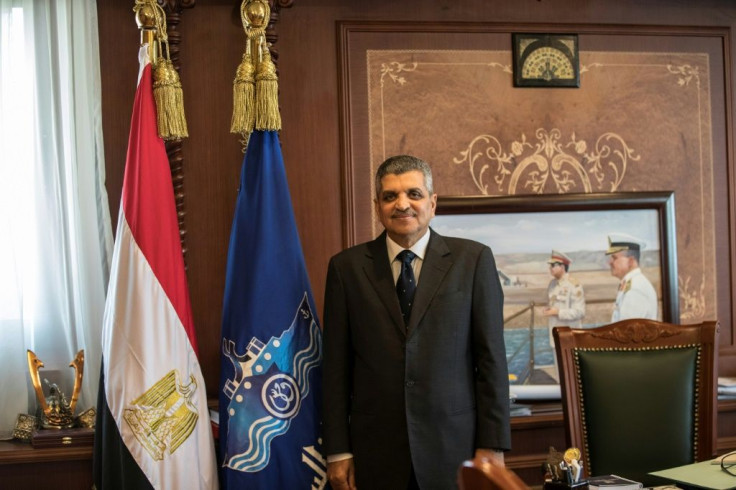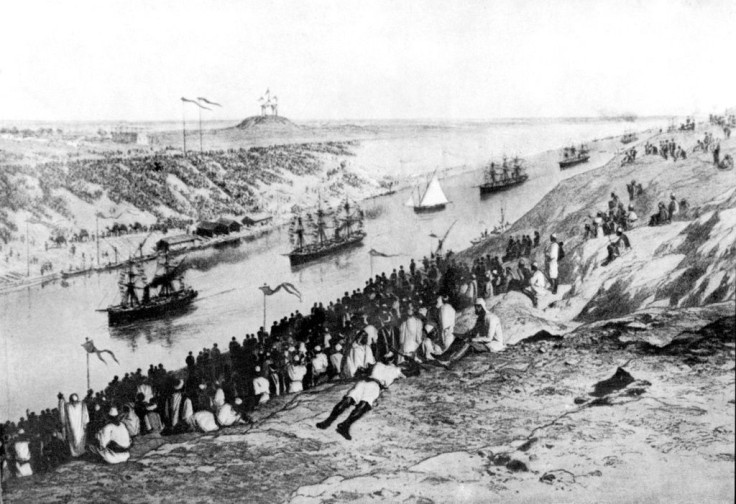A Century And Half On, Suez Canal Is 'Lifeline' For Egypt

One hundred and fifty years after the Suez Canal opened, the international waterway is hugely significant to the economy of modern-day Egypt, which nationalised it in 1956.
The canal, which links the Mediterranean to the Red Sea, was opened to navigation in 1869 and was expanded in 2015 to accommodate larger ships.
Dug in the 19th century using "rudimentary tools," the canal has today become "a lifeline for Egypt and countries around the world," Admiral Osama Rabie, head of the Suez Canal Authority, told AFP in a rare interview.
"We give credit to Ferdinand de Lesseps for putting forward the idea," he said, referring to the French diplomat who masterminded the waterway dug over a decade between 1859 to 1869.
But he insisted it was thanks to the "genius" of the Egyptian people that the project really came to life.
"It was a miracle by all accounts to excavate a 164-kilometre-long (102-mile) canal in 10 years with rudimentary tools," he said.
"A quarter of Egyptians took part in the excavations, that was about a million citizens out of the population of 4.5 million people at that time."
"Between 100,000 to 120,000 died," Rabie added, highlighting that many succumbed to disease. Experts however dispute those figures saying the fatalities were poorly documented.
In 2015, Egyptians threw their support behind President Abdel Fattah al-Sisi's project to expand the canal, "purchasing 64 billion Egyptian pounds (3.5 million euros, $3.8 million) of investment certificates within eight days".
Thanks to that project, transit time has now been cut from 22 to 11 hours, and the number of vessels crossing daily has increased from an average of 40-45 to 60-65 giant tankers, he said.

Nowadays, container ships account for more than half of the canal's total traffic, with some of them being among the largest in the world reaching a capacity of up to 23,000 TEU (twenty-foot equivalent unit).
Giant oil tankers carrying more than 200,000 tonnes can now transit through the canal as well.
Authorities have also sought to develop the Sinai Peninsula, which lies on the eastern edge of the canal.
"We have also dug six tunnels under the Suez Canal to facilitate movement crossing to and from the Sinai," Rabie said.
"Before we used to talk about developing the Sinai peninsula without any serious decisions having been taken. Now access is easy for people and investors."
Egypt is also developing a free-zone trade hub spanning 461 square kilometres (178 square miles) known as "the Suez Canal Economic Zone".
"Many projects exist along the banks," said Rabie, citing ship supply zones, pharmaceutical factories and car assembly plants.
He maintained also that the canal "is perfectly secured" under the command of the Egyptian armed forces.
Ongoing fighting between the Egyptian army against the Islamist insurgents in North Sinai "has not affected" the canal or trade, he stressed.
emp/mz/jkb/aph
© Copyright AFP 2024. All rights reserved.





















